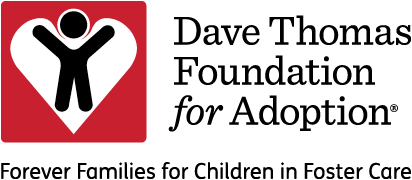7 Common Fears
Children in Foster Care Have About Being Adopted
When youth in foster care are asked whether they want to be adopted, child welfare professionals should expect to hear “no.” These young people may have experienced many layers of trauma in their lives. It is reasonable that they would be hesitant to trust another adult and an uncertain future.
However, instead of halting recruitment efforts at an initial “no,” professionals should assist youth in overcoming their fears in a way that respects their voice, privacy and dignity.
Through the Dave Thomas Foundation for Adoption’s Wendy’s Wonderful Kids® program (WWK), child welfare professionals, known as recruiters, use an evidence-based, child-focused model to find permanent families for the longest-waiting children in foster care. A key component of the model is building a trusting relationship with the young people they serve, helping them unpack fears and misconceptions about adoption.
Download “7 Common Fears Children Have About Being Adopted” for strategies to help youth work through their fears on the journey to permanency.
“[Megan] showed me right off the bat that she was there for me. She was somebody that was going to be in my corner and help me through whatever I need.”
— Merriah, adopted at 14 with support from Megan (WWK recruiter)
7 Fears of Adoption

Often, youth in foster care have lived in multiple homes throughout their lives, which creates a longing for stability. The thought of having to move again can be exhausting. WWK recruiters work to help these young people realize that location is not stability and explore ways they can stay in touch with connections from their past placements.

Young people waiting in foster care may feel love and loss for their family of origin. Regardless of why a child was placed into care, many believe that accepting their place within an adoptive family means rejecting their family of origin completely.

Identity formation begins in childhood and moves to the forefront in the teenage years. Keeping in mind that the average age of the focus population served by WWK is 14 and that adoption-related identity issues start to increase at age 12, it is understandable why young people would not want to let go of this part of themselves. The youth’s last name may be the only piece they have left of their family of origin.

It is no secret that youth in foster care have often moved from house to house, which leads to an overall sense of not feeling good enough and unwanted. This can contribute to low self-esteem and concerns about how they may be viewed by others.

Fear of the unknown is a universal fear for youth and adults alike. Asking someone to be open to the idea of permanently becoming part of a family that has not yet been identified can be overwhelming. Often, youth do not feel they can truly answer this question until they know to whom they are saying “yes.”

Entering a new home with new rules can be scary. Not knowing the consequences of broken rules can be scarier, especially when youth have experienced trauma. Collaboration between the youth, family and child welfare professionals is important so that everyone’s concerns can be addressed.

Safety and wellbeing are always a priority. However, not everyone’s idea of feeling safe and happy is the same. Having a plan in place to nurture and protect the youth’s safety and wellbeing is a best practice to give them peace of mind.
Stories of Impact
View the Foundation’s YouTube channel to watch more stories of impact from the perspectives of youth, parents and child welfare professionals.
Share your thoughts
We want to hear from you about effective strategies for achieving permanency for children in foster care as well as content and resources you would find helpful to support your work.
